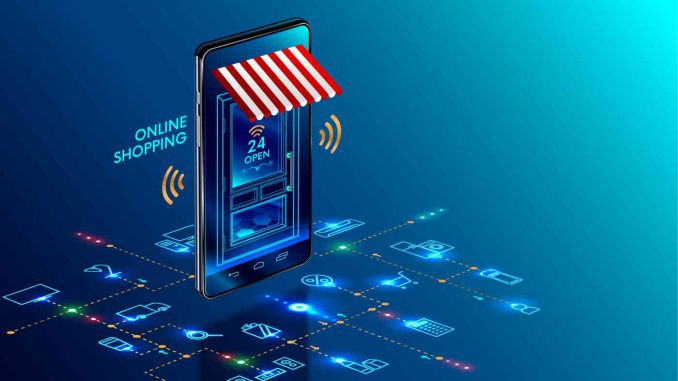
The retail industry is undergoing a massive transformation, driven by advancements in technology. From e-commerce platforms to augmented reality, technology is reshaping how consumers shop and interact with brands. As we move into 2024, the future of retail is set to be more personalized, immersive, and efficient than ever before. In this article, we’ll explore the key technological trends that are revolutionizing the retail industry and what they mean for the future of shopping.
1. The Rise of E-Commerce
E-commerce has been a dominant force in retail for years, but its growth shows no signs of slowing down. Online shopping platforms like Amazon, Shopify, and Alibaba have made it easier than ever for consumers to purchase products from the comfort of their homes. In 2024, we can expect e-commerce to become even more sophisticated, with features like AI-driven product recommendations, virtual try-ons, and same-day delivery becoming standard.
2. Personalized Shopping Experiences
Personalization is a key trend in retail, and technology is making it possible to deliver tailored experiences to each customer. By leveraging data analytics and AI, retailers can analyze customer behavior and preferences to offer personalized product recommendations, discounts, and marketing messages. For example, Netflix-style recommendation engines are being used by e-commerce platforms to suggest products that align with a customer’s past purchases and browsing history. In 2024, personalization will become even more advanced, with real-time customization based on a customer’s current context and needs.
3. Augmented Reality (AR) and Virtual Reality (VR)
AR and VR are transforming the way consumers interact with products. AR allows customers to visualize how a product will look in their home or on their body before making a purchase. For instance, furniture retailers like IKEA use AR apps to let customers see how a piece of furniture will fit in their space. VR, on the other hand, is being used to create immersive shopping experiences, such as virtual stores where customers can browse and interact with products in a 3D environment. In 2024, AR and VR will play an even bigger role in bridging the gap between online and offline shopping.
4. The Role of Artificial Intelligence (AI) in Retail
AI is revolutionizing retail by enabling smarter decision-making and automation. From inventory management to customer service, AI-powered tools are helping retailers streamline operations and enhance the shopping experience. For example, AI chatbots are being used to provide instant customer support, while predictive analytics tools are helping retailers forecast demand and optimize pricing. In 2024, AI will continue to drive innovation in retail, with applications like cashier-less stores and dynamic pricing becoming more widespread.
5. The Growth of Mobile Commerce
Mobile commerce, or m-commerce, is becoming increasingly popular as more consumers use their smartphones to shop. Retailers are optimizing their websites and apps for mobile devices, offering features like one-click purchasing and mobile payment options. In 2024, m-commerce is expected to grow even further, with innovations like voice shopping and augmented reality shopping experiences becoming more common.
6. The Impact of Social Commerce
Social media platforms are becoming powerful shopping channels, thanks to the rise of social commerce. Platforms like Instagram, TikTok, and Pinterest are integrating shopping features that allow users to purchase products directly from posts and ads. In 2024, social commerce will continue to grow, with more brands leveraging influencer marketing and user-generated content to drive sales.
7. The Role of Big Data in Retail
Big data is playing a crucial role in helping retailers understand their customers and optimize their operations. By analyzing large datasets, retailers can gain insights into customer behavior, market trends, and inventory levels. This information is being used to improve product offerings, marketing strategies, and supply chain management. In 2024, the use of big data in retail will become even more sophisticated, with real-time analytics enabling more agile decision-making.
8. The Rise of Sustainable Retail
Sustainability is becoming a key focus for retailers, and technology is playing a vital role in enabling more eco-friendly practices. From reducing packaging waste to optimizing supply chains, retailers are using technology to minimize their environmental impact. In 2024, we can expect to see more innovations in sustainable retail, such as blockchain-based traceability systems that allow consumers to track the environmental impact of their purchases.
9. The Future of Physical Stores
While e-commerce is growing, physical stores are not going away. Instead, they are evolving to offer more immersive and experiential shopping experiences. Retailers are using technology like interactive displays, digital signage, and smart mirrors to enhance the in-store experience. In 2024, physical stores will continue to innovate, with concepts like pop-up stores and experiential retail becoming more popular.
10. The Role of Robotics in Retail
Robotics is being used to automate various aspects of retail, from inventory management to customer service. For example, robots are being used in warehouses to pick and pack orders, while in-store robots are assisting customers with product recommendations. In 2024, robotics will play an even bigger role in retail, with advancements in AI and machine learning enabling more sophisticated applications.
Conclusion
The future of retail is being shaped by a wave of technological innovations that are making shopping more personalized, immersive, and efficient. From e-commerce and AI to AR and robotics, the trends discussed in this article are revolutionizing the retail industry. As we move into 2024, retailers that embrace these technologies will be better positioned to meet the evolving needs of consumers and stay ahead of the competition. The shopping experience of the future promises to be more convenient, engaging, and sustainable than ever before.